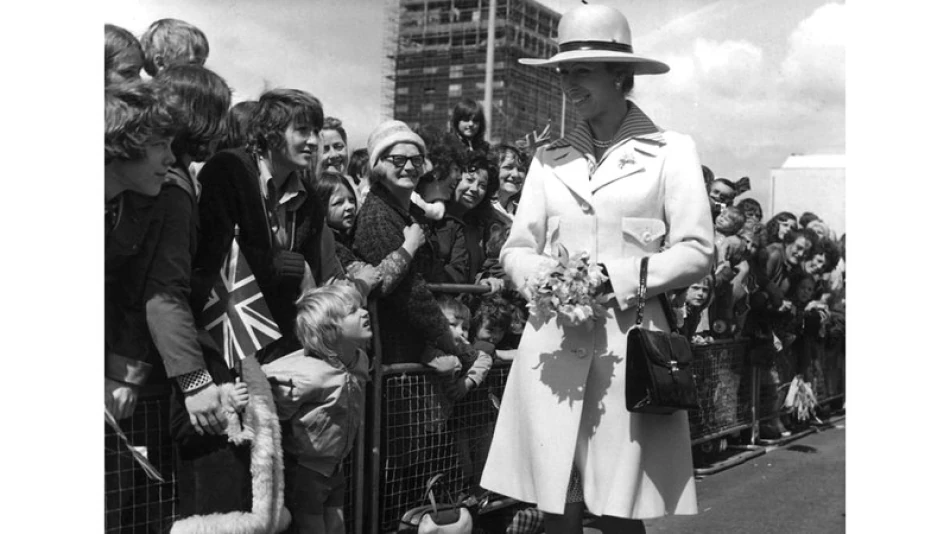
Princess Anne's Critique by US Media Unveiled by Journalist's Exposé
Princess Anne's 1970 American Debut: A Royal Lesson in Media Expectations
More than five decades ago, Princess Anne's first official visit to the United States became a masterclass in cultural misunderstanding and media scrutiny. What should have been a diplomatic triumph in 1970 instead earned the then-19-year-old royal the unflattering nickname "The Grumpy Princess" from American press, highlighting the stark differences between British reserve and American expectations of public figures.
When Royal Reality Met American Expectations
Princess Anne accompanied her older brother, Prince Charles, on a two-day tour of Washington D.C., including a meeting with President Richard Nixon. However, the visit quickly soured when American journalists encountered a young royal who refused to conform to their expectations of fairy-tale princess behavior.
The cultural clash reached its peak during a tense exchange with reporters at the Washington Monument. When asked for her opinion of the memorial, Anne curtly replied, "I don't give interviews." This response, combined with what American media perceived as a perpetually serious expression, immediately branded her as unfriendly and aloof.
The Fatigue Factor
Royal commentators later suggested that Anne's demeanor may have been influenced by exhaustion. The American leg followed a grueling 10-day tour of Canada, leaving the teenage princess physically and emotionally drained. Yet American media showed little sympathy for these circumstances, instead focusing on her failure to project the cheerful, accessible image they expected.
Cultural Disconnect and Double Standards
Journalist Victoria Murphy, speaking on Channel 5's documentary about Princess Anne, noted how quickly American press zeroed in on the princess's facial expressions. "They immediately noticed she wasn't smiling much and thought she wasn't enjoying herself as much as they expected," Murphy observed.
Royal commentator Wesley Kerr offered insight into this cultural misunderstanding: "Her resting expression isn't a smile or happiness, so I think the American press criticized her for not being a fairy-tale princess." This observation highlights a fundamental disconnect between British royal protocol—which emphasizes dignity and restraint—and American media culture's preference for warmth and accessibility.
The "Grumpy Princess" Label
The negative coverage crystallized into the "Grumpy Princess" moniker that followed Anne for years. Royal commentator Penny Junor noted in 2021 that many American journalists felt Anne appeared "tired" throughout her tour, but this explanation did little to soften the harsh initial impressions.
A Learning Experience for Royal Protocol
The 1970 visit occurred at a crucial time in Anne's development as a working royal. At just 19, she was beginning to assume official duties and learning to navigate the complex world of international diplomacy. The American tour included visits to the Lincoln Memorial, Mount Vernon, and the Smithsonian's Space Museum—prestigious venues that should have showcased British-American friendship.
Instead, the visit became an early lesson in how different cultures interpret royal behavior. While British audiences might have viewed Anne's serious demeanor as appropriately dignified, American media and public expected the warmth and approachability more common in their own political and entertainment figures.
Long-term Impact on Royal Media Strategy
Princess Anne's challenging American debut likely influenced how the royal family approached future overseas visits. The incident demonstrated the importance of cultural preparation and media training for younger royals, lessons that would prove valuable as the monarchy faced increasing global scrutiny in subsequent decades.
Today, Princess Anne is widely respected for her no-nonsense approach and tireless work ethic. The same qualities that earned criticism in 1970—her directness, serious demeanor, and refusal to perform for cameras—are now seen as refreshingly authentic in an age of manufactured celebrity personas. Her early American experience serves as a reminder that initial impressions, while powerful, don't always predict long-term legacy.
 Sara Khaled
Sara Khaled







